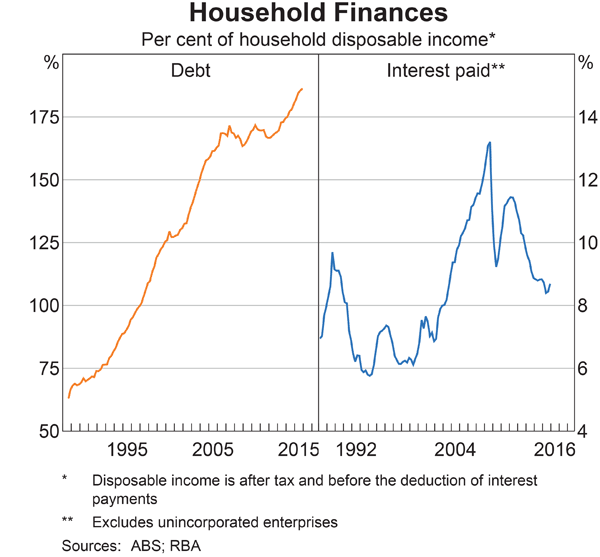On Monday 7:30 did a segment on the mortgage debt burden on Australian households. Using a leaked report prepared by APRA from before the GFC they indicated that the regulator was concerned about the level of mortgage debt in 2006, and included modelling to suggest that up to 7% of households could default by 2009, with ensuing pressure on the banks. At that stage mortgage debt was in the region of $700 bn.
Of course, the get-out-of-jail card was the GFC, with ensuing cuts in interest rates, the cash splash, and income growth meant the concerns were overtaken by events, and both households and banks survived (though some small ones were mopped up along the way). By the way, our own mortgage stress modelling should the same level of risks back then.
Jump forward to 2016, the total exposure of the banks to mortgages has doubled, interest rates are very low, and lending standards proved to be lax, such that the regulators have been tightening them recently. The big question is of course, whether the risks in the system, despite capital buffers being raised and lending criteria are being tightened, still exist.
We see mortgage stress at similar levels to those of 2006 (despite the ultra-low interest rates), 36% of loans are for investment properties, incomes are stagnant. Delinquency is set to rise.
If interest rates were to rise, some households would get into trouble. Our own modelling suggests about 9% of borrowers are now sitting with loans outside current underwriting limits.
And remember, the root cause is the RBA policy of using households to try and fill the hole left by the declining mining boom – housing finance growth was planned and wanted. Household debt has never been higher.

